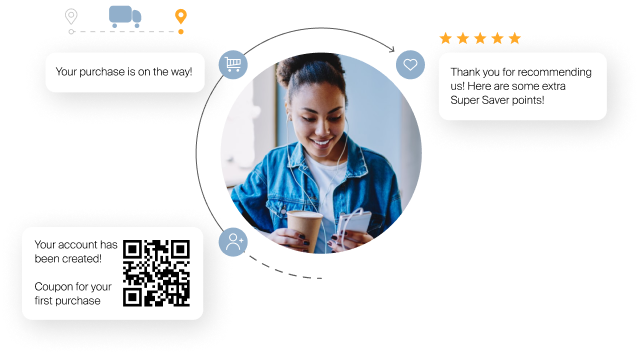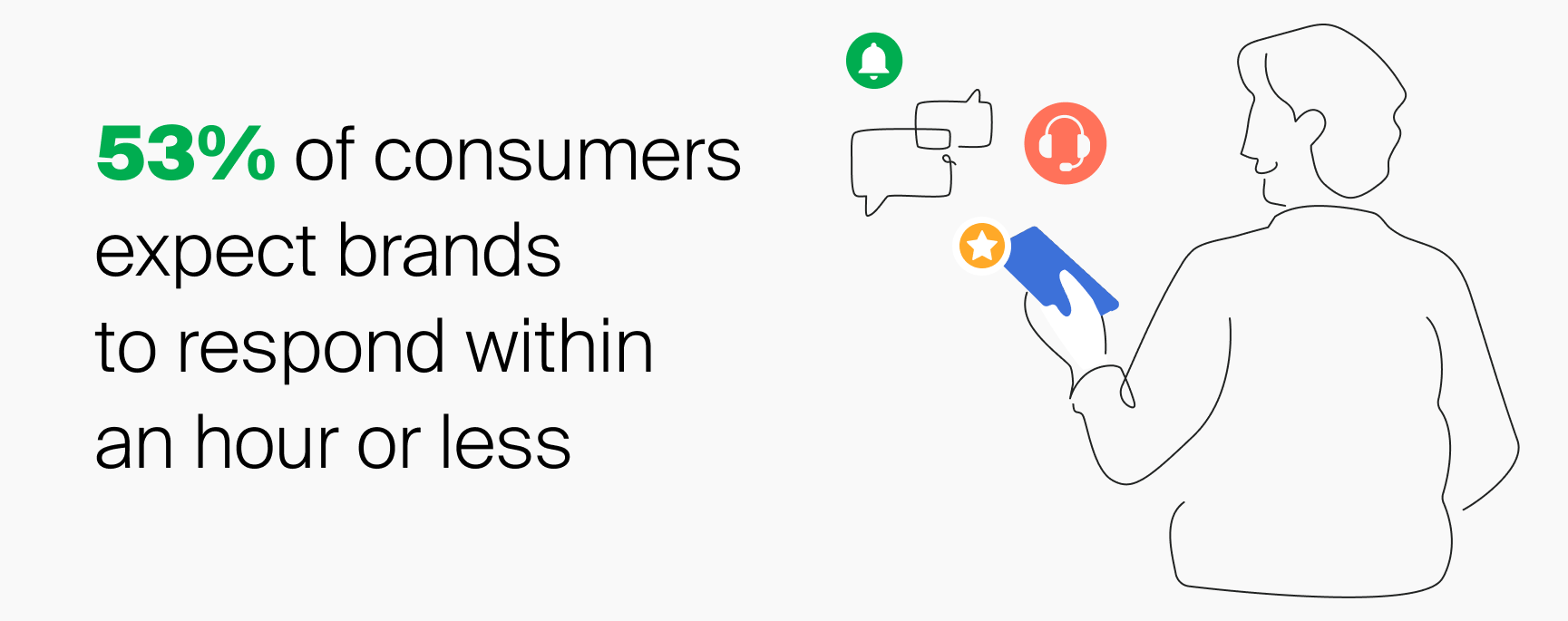The increasingly fragmented customer journeys require brands to strategically plan their communication strategies in order to drive loyalty, retention, and satisfaction. As digital users’ expectations change and evolve, the challenge is to stay relevant and creative enough to ensure engagement. A recent report by Genesys revealed that 62% of consumers think receiving services they need at any time in their preferred channel is one of the most valuable personalised experiences.
Become a GMS Go-Getter + FREE eBook (immediately available)
This figure points to the growing importance of going beyond basic brand outreach to offer relevant communication experiences at every touchpoint via the right channel. By delivering personalised and timely messages via the customer-preferred medium, brands are more likely to stand out from the crowd and provide memorable experiences.
Challenge 1: Disconnected Touchpoints

Touchpoints are interactions between customers and businesses that happen during a buyer’s journey. These moments often influence CX as well as the customer’s perception of the brand. By distinguishing key touchpoints, businesses can utilise timely opportunities to optimise their customer’s journey.
Creating an informed and smooth buyer journey will be crucial to the success of your engagement strategy. By analysing and eliminating unnecessary touch points, businesses can save time and reduce ‘noise’ for the consumer. Focusing all their efforts on essential touchpoints will influence your customers and guide them towards purchases.
For example, you can alert your subscribers of an upcoming flash sale via email, remind them via SMS, and provide recommended products via Viber or WhatsApp. You can continue the communication via their favourite channel to remind them of an item they abandoned in their cart (for e-commerce) or offer free consultancy on their future saving or investment plans (in BFSI). Connecting all these touchpoints in a seamless flow is critical to removing friction and inconsistency in customer communications.
Challenge 2: Lack of Personalisation
When consumers are parting with their hard-earned cash, it’s understandable they want to feel valued. 73% of them expect companies to understand their unique needs and expectations, and over one-half expect offers to always be personalised to them.
Using a solution to help track previous behaviours and actions helps brands deliver targeted marketing campaigns to make consumers feel understood and cared for. 56% of consumers still believe that companies only see them as a number, making your investment in personalisation essential to stand out from competitors. In addition to providing recommendations based on their past interactions with your brand, you can also offer support via their preferred mobile channel. This helps you humanise your brand and build positive sentiment, which is essential to encourage new purchases.
Collecting and analysing consumer data can be a challenge, but investing in appropriate tools and being transparent about data collection practices builds customer trust and gains you invaluable information.
Challenge 3: Lack of Immediacy

Studies show that 53% of users expect to hear back from the brand they’re interacting with in less than an hour, and that number only goes up when they are looking to make or resolve a complaint. Single-channel customer service, such as phone or email, will not be able to deliver on this expectation, especially not 24/7 without a substantial investment in customer service employees.
Using a Communications Platform-as-a-Service (CPaaS) can be a great way to keep in contact with a customer throughout their buying journey. Automated messages, SMS and emails provide a good level of interaction with a customer and can use information collected to form the message. FAQs can be answered simply by AI Chatbots, and requests such as opening times, shipping costs, and returns policies are easily remedied quickly and efficiently. Without these immediate responses, customers often look elsewhere for their purchasing decisions. Less automated responses can be quickly replied to via WhatsApp, with an added level of familiarity helping customers feel at ease when seeking support.

Challenge 4: Inconsistent Experiences
Consistency and routine are an essential part of most people’s lifestyle. Providing consistent experiences (in tone, expertise, and dedication) to a consumer at every interaction point helps increase retention and loyalty. With 60% of businesses having implemented a CPaaS platform already, it is clear that cross-channel engagements are becoming more critical to modern business strategies.
Using a platform that can help maintain an optimised experience for your customers at every channel may bring significant CX improvements. Leveraging tools and technology helps both your marketing and support teams to be more efficient and productive while providing the needed consistency to the customer. Implementing the right tools can reduce response times, streamline processes, and ensure support reps have the resources they need to maintain exceptional customer service.
Challenge 5: Relevant Content
The biggest drivers for the adoption of CPaaS are the emerging consumer preferences for immediate, personalised and ‘always-on’ communication. The average consumer is inundated with content and, as a result, is constantly filtering out what doesn’t seem relevant to them.
Keeping content relevant, up-to-date, and personalised will be more appealing to your audiences. To achieve this, brands need to analyse that content and plan interactions at micro-moments when consumers have shown intent (subscribed to notifications, browsed your website, interacted with chatbot). Using data produced by users, for example, purchase history, website visits and returns history, can help businesses develop targeted advertising to individuals and use their usual browsing or shopping hours to send out automated emails.
Creating content that is also relevant to themes and news within your industry helps to position your business as an expert within that field. Producing relevant content which encourages brand visibility makes consumers feel more familiar with your brand and demonstrates expertise.
Challenge 6: Getting Qualitative Data
Understanding your consumers’ expectations and experiences is essential to your engagement strategies. The most effective way to develop this understanding is to gain qualitative data from your customers directly through surveys and quick polls. While there’ll be a limited number of customers who might be ready for a true “voice of a customer” call, most will not want to invest more time in giving feedback than what it takes to reply to a quick text message. That’s why it might be handy to design quick post-purchase surveys where customers can rate your service by several categories or send a couple of quick yes/no questions over the next couple of months.
Analysing the success and engagement rates of your previous messaging campaigns is also a great way to gather insights on your consumers’ common behaviours. By combining analytics and qualitative data, you can ensure information accuracy to use as a baseline for relevant content creation.
Conclusions
Having a customer engagement strategy that includes SMS, WhatsApp, AI Chatbots and Viber helps consolidate customer journey touchpoints and deliver consistent experiences. Suitably timed messages via a customer’s channel of choice help you gain more control over their journeys, increase conversions, and clear a pathway for building long-lasting relationships.
If you are looking to enhance the communication aspects of your customer engagement and experience strategy, make sure to contact GMS experts today!

